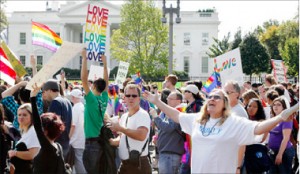
By Justin Freedman
The suicide of Rutgers student Tyler Clementi last month was just one of several suicides related to homophobia in our country this year. In order to make homophobia-related suicides a thing of the past, we should consider altering our approach to addressing this issue on our campuses and in our hometowns.
To begin, we should admit that homophobia exists on our campus. Although the record-breaking kiss we witnessed this semester between two male individuals was wonderful to see, the College’s campus is not without homophobia. (At least one student was caught on camera yelling “fa**ot” at the guys. How many others turned to their friends and whispered the same thing?)
Homophobia is too ingrained in our society to be deconstructed by simply preaching tolerance and acceptance of all people. It is imperative that we be more proactive in combating discrimination by aggressively confronting hateful sentiment. As history has shown, shifting attitudes about homosexuality requires the creation of more tension.
Like the struggle for the LGBT community, the Civil Rights Movement required tension and conflict in order to combat racism. In his “Letter From the Birmingham Jail,” Martin Luther King asserts, “there is a type of constructive, nonviolent tension which is necessary for growth.” Creating discomfort, King maintains, forces people to confront the issue.
Black and white activists alike were victims of violence as they sat-in at segregated lunch counters. Such actions fueled the fire of the movement. Like racism, homophobic sentiment must be confronted with a grassroots movement in order to be countered.
There are many ways we can act to defy homophobia. As our provost suggested at the candlelight vigil for Tyler Clementi, we have the power to research and boycott corporations, such as Exxon Mobil, that are known to discriminate against homosexuals. We have the power to vote for representatives that will support gay rights. However, while both boycotts and voting are important tools in this movement, they are not enough to create tension and ensure that latent homophobia is brought to the surface.
I wonder, what would be the equivalent to a sit-in at a segregated lunch counter in the gay rights movement? In other words, what can we do to create tension in our communities by eliciting reactions from homophobic individuals and groups? The record-breaking kiss a few weeks ago was a good place to start. Now imagine if there was a campus-wide day in which homosexual couples kissed all around campus. What kinds of reactions would there be? Would we hear shouts of fa**ot or “d*ke”? Better yet, imagine if heterosexual students were asked to support the cause by kissing a member of the same sex. Would anyone be willing to participate? Or is asking for this support taking it a little ‘too far’?
Regardless of the path we chose to take, we need to encourage people to express their opinions about homosexuality in public spaces. If we do not aggressively confront discriminatory sentiments, we will continue to allow people to harbor ignorance and hate in isolation.






